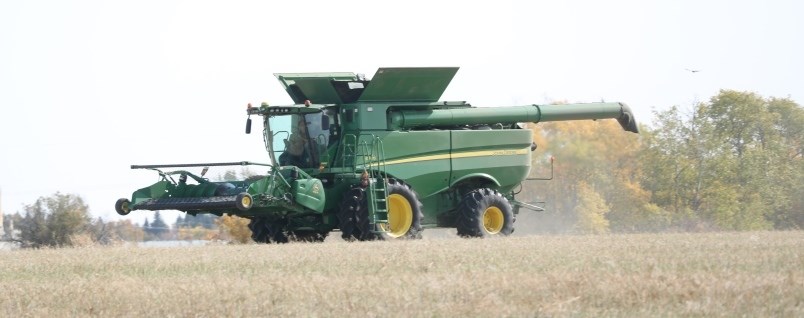ASSINIBOIA - With harvest mostly wrapped up in the region for the past few weeks, producers have continued to do other fall work as weather conditions allow. Very little herbicide spraying or fertilizer applications are occurring due to very dry moisture conditions in much of the region. The region experienced very little precipitation for the third year in a row and without a significant rainfall to replenish the soil for the 2022 growing season many producers predict it will be an even worse year.
Extended dry and hot conditions negatively impacted crop production in many areas of the region; some crops never produced seed and were cut for green feed or were so short they were unable to be cut and baled. Crop yields vary in the region depending on how much moisture, which was very little, was received throughout the growing season.
In general, crop yields were well below average across most of the region as there were major yield impacts due to the extreme heat, severe dry conditions and constant wind this summer. Crop quality in the region was good mainly due to dry harvesting weather conditions. The majority of crops are falling within the top two grades thanks to limited fall moisture during harvest and limited disease issues.
Moisture conditions have been a major concern for the entire growing season and continue to remain a concern for the region heading into winter. The southwest has received below or well below average precipitation, along with strong winds and hot temperatures during the majority of the growing season.
Much of the region has been short or very short of topsoil moisture throughout the growing season and the farm land along with dugouts and sloughs is in severe need of water. Heading into winter, cropland topsoil moisture is rated as 12 per cent adequate, 25 per cent short and 63 per cent very short. Hay and pasture land topsoil moisture is rated as six per cent adequate, 25 per cent short and 69 per cent very short.
Average hay yields on dry land are reported (in tons per acre) as: alfalfa 0.41; alfalfa/brome 0.56; other tame hay 0.42; wild hay 0.59; and greenfeed 0.75. On irrigated land hay yields (in tons per acre) are estimated as: alfalfa 2.33 and alfalfa/brome 2.24.
At this time, most livestock producers have indicated that they will have inadequate to adequate hay, straw, greenfeed and feed grain heading into winter. Producers who have little for winter feed supplies have very few options and will likely be forced to reduce their herd size in order to stretch their feed through the winter.
Along with feed concerns due to the lack of moisture, producers have noted concerns for livestock water supplies as well as their dugouts and wells have been depleting over the summer; some producers have been hauling water all summer long since they did not experience enough snow melt runoff to replenish their dugouts for multiple years.
With the drier than normal field conditions this fall, the number of acres seeded to winter cereals is below average in most areas. There were concerns that crops would not germinate and establish properly prior to winter.
Producers are busy hauling grain and bales, working sloughs and low spots, harrowing, spraying, fixing fences and bringing cattle home.




